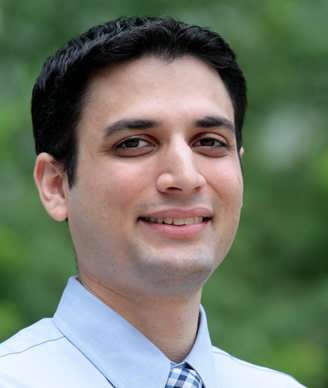Getting the Most Out of the ASCO Poster Sessions
It’s Saturday morning, and ASCO is fully underway. I started the morning at the immense poster exhibit hall. Although it is easy to feel intimidated by the size of the room and number of posters, I find that walking the poster hall can actually be one of the most personal and intimate ways to experience the ASCO meeting.
Aaron Falchook, MD

It’s Saturday morning, and ASCO is fully underway. I started the morning at the immense poster exhibit hall. Although it is easy to feel intimidated by the size of the room and number of posters, I find that walking the poster hall can actually be one of the most personal and intimate ways to experience the ASCO meeting. Oral presentations, education sessions, and other lectures provide a great opportunity to learn at ASCO, but talking with the poster presenters one-on-one can be rewarding, fun, and very educational. The following are steps that I recommend to maximize your poster session experience:
Don’t bite off more than you can chew. There are literally thousands of posters presented at ASCO every year and it is impossible to examine each one in detail. A good first step in going to a poster session is to decide what your focus will be. There are several ways to do this. One option is to focus on a specific disease site that is of interest to you. Another option is to decide about a particular treatment modality or research topic to focus on. For example, I am a radiation oncology resident, and I walk the entire poster hall across all disease sites and stop to focus primarily on posters that examine questions directly related to radiotherapy. Other possible topics of interest may include: use of immunotherapy or targeted agents, cancer genomics, quality of life, ongoing clinical trials, or treatment of metastatic disease. By narrowing the focus of your poster walk, the huge poster exhibit room will become much smaller and more manageable.
Talk to the poster presenters. To me, the opportunity to talk with presenters is one of the greatest strengths of the poster session. Take advantage of this! And don’t be shy about asking any questions you have about the posters. Most presenters will be more than happy to talk about their research with you. There are presenters from all over the world. Talking to them about their research and clinical practices is a great opportunity to learn, get new ideas for research questions, and potentially even set up collaborations for future research. For example, at today’s poster session, I stopped to speak with several presenters about their abstracts about management of esophageal cancer. One presenter from Brazil told me that at his institution, all patients were treated with definitive chemoradiotherapy, with none receiving surgery. A presenter from China told me that his institution more commonly uses sequential chemotherapy followed by radiotherapy (rather than concurrent chemoradiotherapy), with select patients going to surgery. Finally, a Dutch presenter told me that her institution uses the treatment regimen from the CROSS trial (chemoradiotherapy followed by surgery), which is also what we typically use at my institution. Also, don’t forget to bring plenty of business cards to hand out when networking at the poster session.
Take advantage of poster walks. This one applies more to students, residents, and fellows who are attending ASCO. Most of the poster sessions will have a poster walk, where a faculty member will lead a “guided tour” of select posters. This is a great opportunity to meet other trainees as well as interact with faculty members who are experts in their respective fields. Also, they usually select some of the best posters to discuss, so it will help you highlight some of the highest quality posters that you may otherwise have missed. These sessions sometimes require an RSVP.
Take notes. There is a vast amount of information presented in the poster exhibit hall and it can be difficult to keep straight. It can be very helpful to take notes when you stop to look at posters so that later you can summarize and consolidate what you have learned. Taking notes also will help you organize your impressions of the posters and may help you come up with questions or other points to discuss with the poster presenters.
These simple suggestions will help make your poster session much more manageable and hopefully more meaningful as well.